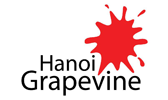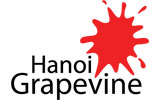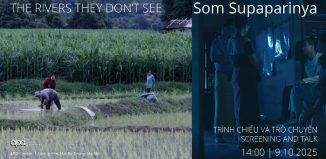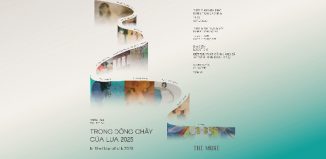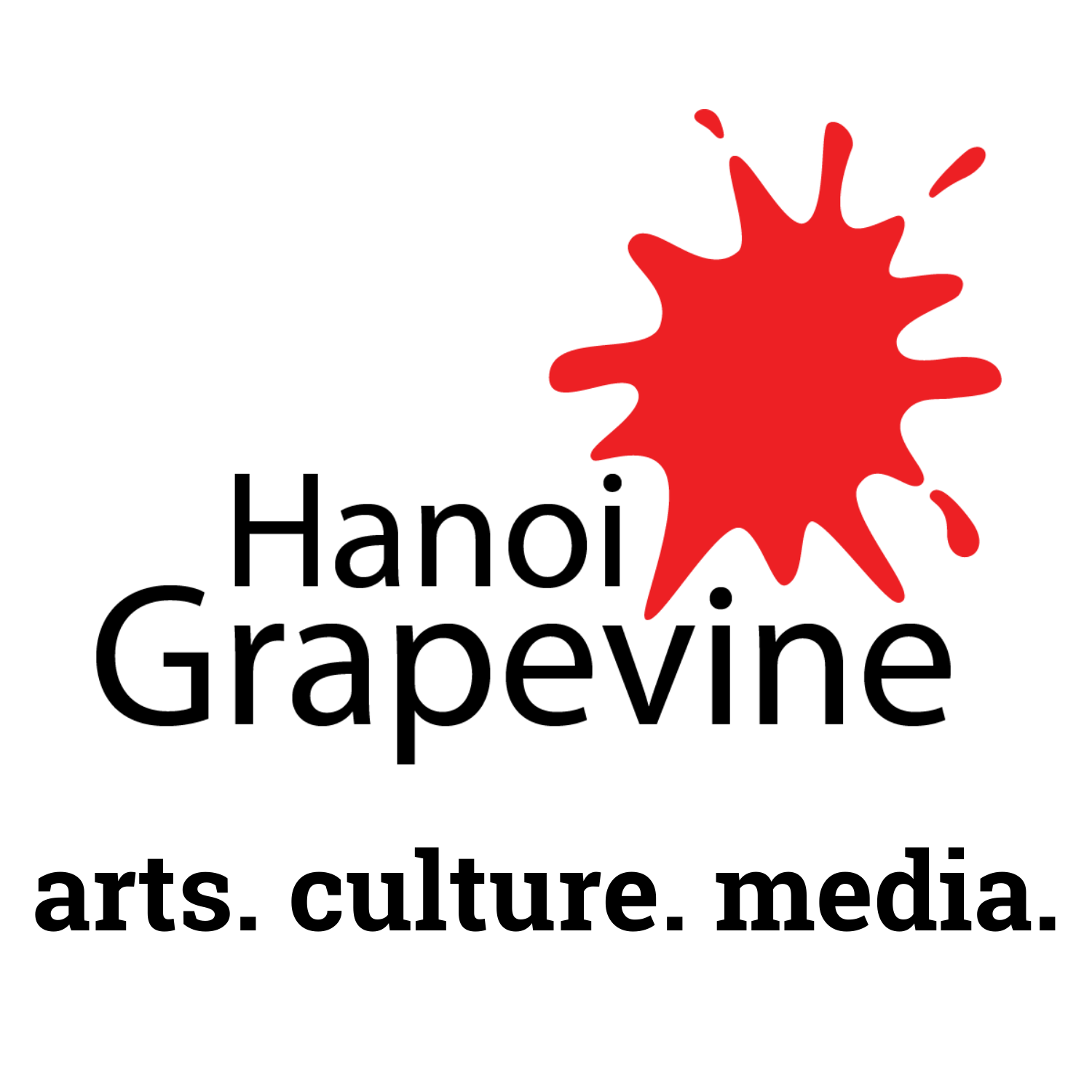Recent Educational Turns in Curating Practices in Vietnam
From Singapore Biennale 2013 blog:
Recent Educational Turns in Curating Practices in Vietnam
(By Nguyen Nhu Huy)
I: Late 1990s: The Curator as Event Organiser
The position of the independent curator was only introduced in the Vietnam art scene after the 1990s, together with the Vietnamese government’s “open-door policy”. For the first time, local Vietnamese artists could organise exhibitions independently. This was very different from before, when only fine art associations (which are extended hands of the government in terms of cultural management) could do this.
However, not until the emergence of alternative spaces did the role of independent curators emerge. Two foreigners, Natalia Kraevskaia and Veronika Radulovic, were important in the creation of these roles.
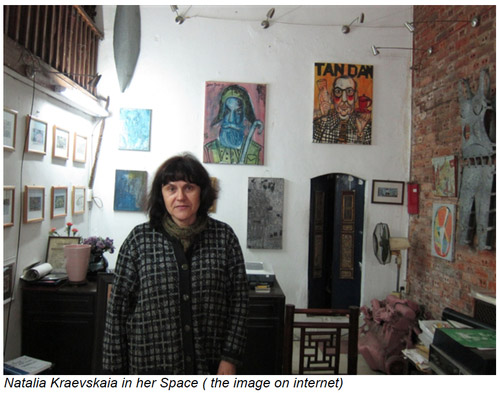
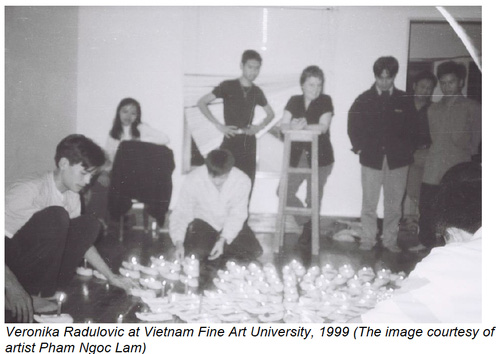
Natalia Kraevskaia is the widow of the late Vietnamese artist, Vu Dan Tan, and lived with her husband at their house, 30 Hang Bong Street in Hanoi. Together with her husband they transformed their private house into a platform for young artists in Hanoi to experiment with several new forms of art. Any artist who would like to do something unusual could go to Natasha (which was Natalia Kraevskaia’s informal name) and ask for a space to realise their work.
The second person who had a strong influence at that time in Hanoi in terms of curating was Veronika Radulovic. Invited to be a guest lecturer in the Vietnam Fine Art University under the cultural exchange programme between DAAD (Deutscher Akademischer Austauschdienst Dienst) and the Vietnam Fine Art University, her main role was to help art students learn about new art practices from the West. At that time, Veronika used her office in the university to teach on new Western art forms as well as organise workshops. Arguably, it was Veronika Radulovic who created the first group of Hanoi young artists who worked with new mediums of contemporary art such as installation and performance art in particular.
The defining characteristic of the curated events by both Natalia Kraevskaia and Veronica Radulovic at that time was that they almost all took place in a closed environment and lacked widespread audience participation. In other words, the audiences for these events were only artists and their friends who came either out of curiosity, or to support their friends.
Because they did not have to deal directly with public audiences, the work of independent curators at that time (who also tended to own the spaces they practised in), was mostly limited to providing space, contacting artists, and organising private events, and did not extend into the realm of using their practice to make exhibitions or events that built social, cultural or political discourses, or even “play” with the relationship between art and audiences.
In other words, the role of the independent curator at that time was not yet structured by curatorial methodology in the sense that curating might be defined, as a specialised practice of building concepts for an exhibition or event, and selecting artists, with a mind to letting the curated exhibition visualise or make explicit political, social or cultural discourses for audiences to experience.
II: Late 1990s and Early 2000s: Local Artists as Curators
The beginning years of the 21st century were when local artists in Vietnam started to take on the role of independent curators.
There were various reasons for this phenomenon, but the most important one is that after around ten years of being introduced to Western contemporary art by foreign curators and artists, local artists became more mature and wanted to take on the role of producing their own art discourses. For them, the time of only imitating Western forms of art in formalistic ways had ended, and they wanted to find their own ways of building new narratives that were highly localised.
These new narratives would logically need new spaces or environments to be expressed and listened to. Spaces which were set up at that time included Hanoi’s Nha San Duc (established1998) and Ryllega, (established 2004), and Himiko Coffee, (established 2005 in Ho Chi Minh City), and New Space Arts Foundation (established 2008 in Hue).
Ryllega art space
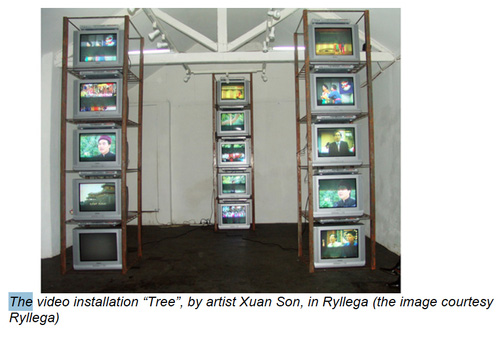
Many local artists took on the role of independent curators at that time, such as Tran Luong, Nguyen Minh Phuoc, Hoang Himiko, the Lê Brothers Thanh & Hai, Nguyen Manh Hung, Nguyen Nhu Huy, Phuong Linh, and Bill Nguyen, to name but a few.
Seen from the perspective of art audience development, these new curating practices by local curator-artists were richer than those of foreign artists or practitioners in Natasha’s salon or at the Vietnam Fine Art University, as they left spaces for local audiences to participate in their events. These events were now happening not only in closed and private spaces, but in public spaces as well. Examples include the events organised by Himiko Coffee which also doubled as a public coffee shop in downtown Ho Chi Minh City, or in Ryllega’s, a small public exhibition space in the centre of downtown Hanoi.
However despite the fact that the relationship between these new exhibitions and events were attended by local audiences and thus richer than before, they were in a sense still limited as the audience could be considered passive, as they were still on “one side” while the artworks, exhibitions and events were on the other . In other words, these new events and exhibitions only created new spaces for local audience to be in the environment they created, but they did not yet make real the possibility and conditions for the audience’s active participation in dialogue with the artists and artwork, in the form of co-producers of knowledge.
III: 2005 till now: Curator as Translator or Educator
Starting from 2005 or so, a new phenomenon occurred in Vietnam which totally turned the practice of curating into something more than the organisation of events or exhibitions in either private or publicly-accessible white cube spaces.
At this time, many artists from the cities of Hanoi, Hue, and Ho Chi Min City started to work with public-based art projects, which ranged from simple ones such as the artist doing performances in public spaces (*1) to more complicated ones such as artists inviting ordinary people to work with them (*2) or artists trying to realise art projects that might be called relational in the Bourriaudian sense. (*3)
These kinds of art projects demanded new skills from the curators who were organising them. All of these projects took place over longer periods of time, and their working-sites were now not specialised ones with audiences made up of “elite” groups, but very “impure” ones where the many different political, social, and cultural realities of everyday life overlapped and sometimes even often came into conflict with each other.
It is because curating practice took place in these new sites that it became more engaged in social, cultural and political discourses and was no longer being limited to symbolic and purely experimental discourses of (contemporary) art. The working sites for such public-based art projects were spaces of everyday life as such, curating practice was directly presented with issues that arose from the interaction between contemporary art and local audiences. It was now not passive and stable, but more active, dynamic and open to many unexpected things.
For this reason, the role of curators who organised public-based art projects from 2005 onward was transformed from the role of putting together avant-garde and experimental events in closed spaces for selected audiences into a person who tries to translate the meaning of art into public and everyday life spaces for audiences that were similarly public and every day. What resulted from this transformation was the fact that the relationship between curators and local audiences became, for the first time, more open than ever before.
It was this openness between independent curators and local audiences that enabled the possibility of the important turn in curating practice in Vietnam that I would like to call the “educational turn”.
In brief, the educational turn is nothing but the transformation of the independent curator into what might be called an independent educator and the transformation of curating practices into a form of art education. There were some interesting projects that took educational forms recently in Vietnam, especially in Hue and Ho Chi Min City. Here I will highlight only two of them, “How to Become Artists?” by Ta My Nhan, and “CUCA Guerrill” by Pham Dieu Huong.

For the project “How to become artist” ,Ta My Nhan interviews Do Hoang Tuong, a successful artist who used to study in Ho Chi Minh City Fine Arts University and who was invited by her to exhibit his work in her curated show (image is courtesy of the artist and ZeroStation).

How to become artist project: The roundtable discussion of the topic “Professional Art Education in Vietnam” (the image is courtesy of artist and ZeroStation)

“CUCA Guerrilla” project: A class on classical aesthetics
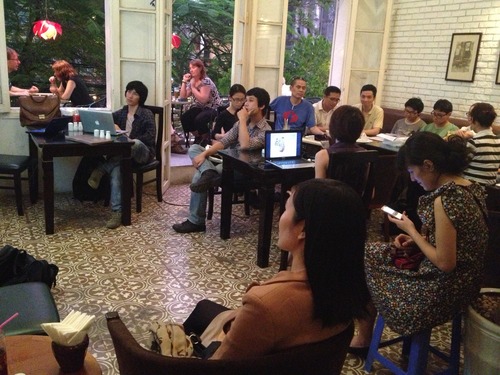
“CUCA Guerrilla” project: the students studying amidst the patrons of the coffee shop
Ta My Nhan’s project was not simply one that used art educational practice just as rhetoric. More interestingly, the artist wanted to use the form of an art project as an instrument to investigate critically the realities of professional art education in Vietnam. The project took place in October 2011 and was separated into two stages.
The first stage was an exhibition curated by Ta My Nhan where the works of famous and successful artists who used to study in Ho Chi Minh Fine Art University were exhibited together with the work of art students who were presently attending that university. The second stage of the project was a roundtable discussion on the topic: “Professional Art Education in Vietnam”, which was organised by the curator with participation by local artists, curators, art collectors, journalists, art students, and a guest artist who was a former art student from Hunter College in New York. The event was free for audiences to attend. The round-table was filmed, English subtitles were added, and it was posted on the website of the organisation ZeroStation, which was co-organiser of this project. This enabled everyone to watch it for free. The link can be seen here.
Pham Dieu Huong’s project was different from Ta My Nhan’s in the way it used art education, not necessarily as a topic to be discussed critically, but as an instrument to co-produce knowledge on contemporary art for local audiences.
CUCA is short form for “Course On Understanding Contemporary Art”, and the word “guerrilla” referred to the form the courses took. They took place in coffee shops and bars in Hanoi. Pham Dieu Huong graduated from Paris I Sorbonne, France in 2007 with a Masters degree in plastic arts and aesthetics and the philosophy of art, and is now a lecturer at the Vietnam Fine Art University, teaching aesthetics and art criticism. He has organised a series of classes on a wide range of issues ranging from classical to contemporary art aesthetics. The project started in August 2012, and it is ongoing till now. All the “students” of these classes are from different ages, backgrounds and jobs, and each paid around 100 USD for a course that lasted for two months. They did not only study in “class” but also organised different forms of gatherings such as cycling in a group to the countryside or visiting exhibitions or studios where they had discussions together on art topics.
These two projects by Ta My Nhan and Pham Dieu Huong, regardless of their differences in target audiences and methodology, share the same characteristics of presenting the curator as an independent educator, who tries to use their curating practice for the purposes of researching, making exhibitions, organising roundtable discussions workshops and doing presentations and talks. They did this in order to spread information and create knowledge and understanding about issues of contemporary art for the public.
The first key point of these recent education-based art projects is a new concept about the audiences of contemporary art. If the audiences of contemporary art before had always been elite groups such as foreigners or Westernised Vietnamese, who can be described as already “understanding” contemporary art, the audiences of contemporary art now, rather, are everyone, or anyone who is ready to participate in the dialogues at a deep level, with artworks, artists, and curators.
The second key point of these projects is the existence of a deep awareness of the local artists and curators of their discursive relationship with local audiences. Now they are mature enough to understand that if all of their practices and works are only aimed toward selective (exclusive?) spaces or small groups, they cannot reach out and create discursive relationships with local audiences, who can be considered the most important part of a two-way relationship of the co-production of value for all contemporary art.
It is from two of these key points that a new concept of “art audience” has been born. Now, art audiences are transformed into more active participants to the extent that they become an organic part of art projects and can co-produce knowledge and discourse with the curators and artists and together, start to build the first communities for contemporary art in Vietnam.
Footnotes:
(1) For example, the project Sneaky Week curated by Pham Duc Tung in Hanoi, Hue and Ho Chi Minh City in 2007 consisted of artists from these three cities doing “guerrilla” performances in public and documenting them with photographs and video. An exhibition was organised at the end of the project where all moving images and photography of these performance pieces were exhibited. They can be seen here.
Sneaky Week Project
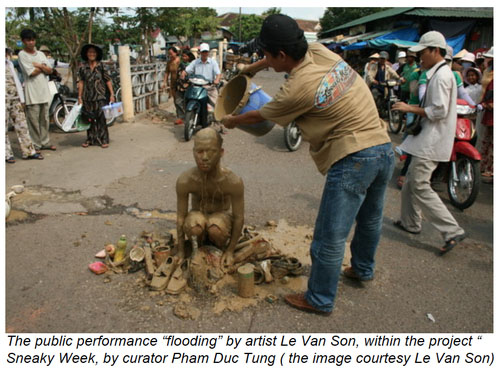
(2) The project Art in Marathon organised and curated by the author of this article, Nguyen Nhu Huy in 2008 took place over three months at three coffee shops in Ho Chi Minh City. This was a transdisciplinary project. Within the main project, some small activities were realised. The first one was Movable Space where artists were invited to do performances in coffee shops; the second was Each Suggest A Proposal where audiences were invited to collaborate with artists to create an exhibition of photographs of their own lives; and the third was the project A Pluralist World where an interactive exhibition on the topics of LGBT love was organised. Audiences could visit a website created by artists and write their opinion of LGBT love . At the end, the audiences were asked to design their own albums with material (consisting of photographs and texts) from the website, and they shared these albums during a gathering on the last day of the project.
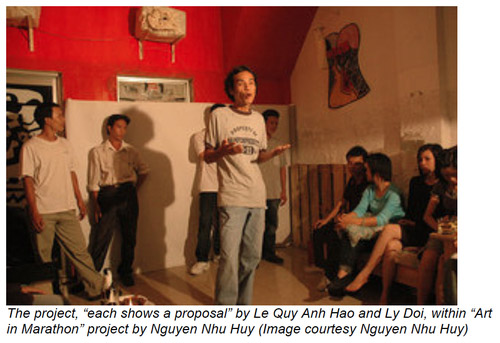
Art in Marathon project
(3) The project In the Market was organised by Ngo Luc in 2007. For ten days, the artist rented a standard space in Hanoi for exhibiting art works, but not for exhibiting his work. Instead, he turned it into a market. He created a coffee shop on the street that led to the exhibition hall so that he could sell coffee and tea to artists who were invited by him to do whatever they wanted in the space. The audience was invited to paint, or make objects from the art materials that had been left in the space. At the end of the project, there was a conference in the space where journalists were invited to discuss with the artists on the outcomes of the project.
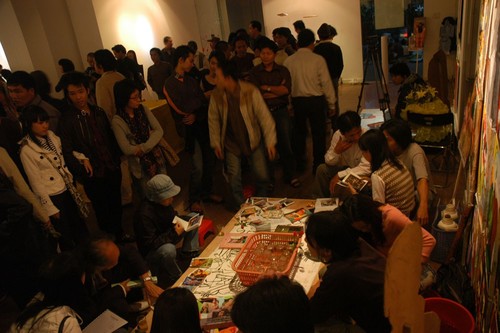
“In the market” project: a coffee shop is invited into the exhibition hall to sell drinks to artists and audiences.
About the author Nguyen Nhu Huy
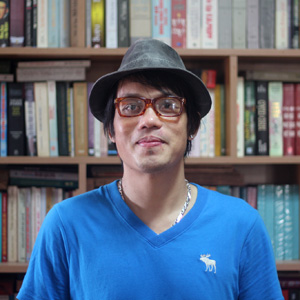 Nguyen Nhu Huy graduated from Ho Chi Minh City University of Fine Art in 1997, and works in various art mediums including installation, painting, photography, and video art. He also is an independent curator, critical writer, and a poet. In 2004, he co-founded a little blah blah, the first artist-run space in Ho Chi Minh City. In 2003-2005, he co-founded and edited independent online art magazine Vnvisualart. He has curated projects such as Art in Marathon in 1997 and Xin Chao, My Darling in Korea in 2008. Presently, he is artistic director of ZeroStation, a project-based art space in Ho Chi Minh City.
Nguyen Nhu Huy graduated from Ho Chi Minh City University of Fine Art in 1997, and works in various art mediums including installation, painting, photography, and video art. He also is an independent curator, critical writer, and a poet. In 2004, he co-founded a little blah blah, the first artist-run space in Ho Chi Minh City. In 2003-2005, he co-founded and edited independent online art magazine Vnvisualart. He has curated projects such as Art in Marathon in 1997 and Xin Chao, My Darling in Korea in 2008. Presently, he is artistic director of ZeroStation, a project-based art space in Ho Chi Minh City.
Source: Singapore Biennale 2013 blog
